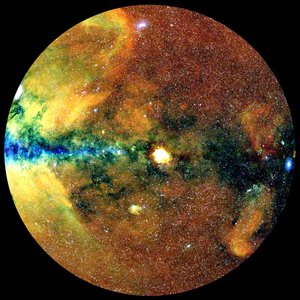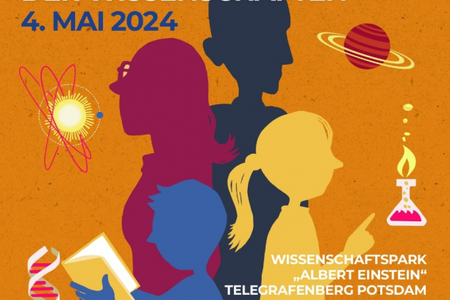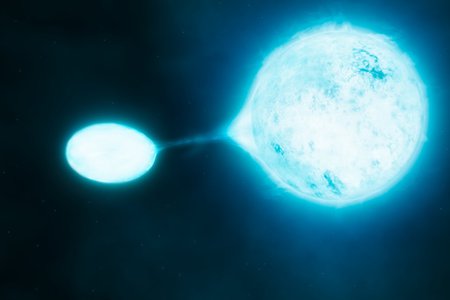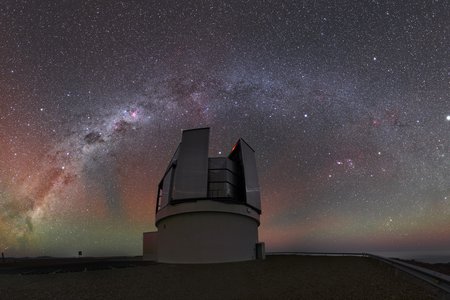Virtual lecture: Babelsberg Starry Night on 18 April 2024
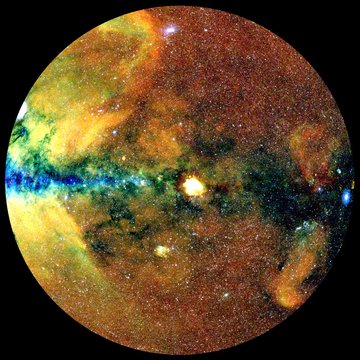
The X-ray sky, projected onto a circle (so-called zenith equal area projection) with the center of the Milky Way on the left and the galactic plane in the horizontal. The photons are color-coded according to their energy (red for energies of 0.3-0.6 keV, green for 0.6-1 keV, blue for 1-2.3 keV).
Credit: MPE, J. Sanders for the eROSITA consortiumThe next talk of the Virtual Babelsberg Starry Nights of the Leibniz Institute for Astrophysics Potsdam (AIP) presents the first data publication of the X-ray telescope "eROSITA" and will be broadcasted on the YouTube channel “Urknall, Weltall und das Leben” (Big Bang, Universe and Life) from Thursday, 18th April 2024.
On Thursday at 8m, the lecture by Dr. Georg Lamer on "eROSTIA – Mapping the hot universe" (German) from the Babelsberg Starry Nights series will be online. The eROSITA X-ray telescope was launched into space from Baikonur in 2019 with the Spektrum-Röntgen-Gamma (SRG) satellite and mapped the entire sky several times in the X-ray range until February 2022. The German eROSITA consortium has published its share from the first 6-month sky survey and made the largest catalogue of X-ray sources worldwide with 900,000 objects available. In his lecture Georg Lamer introduces the eROSITA project and presents some highlights from the first 6 months of the sky survey.
Usually on the 3rd Thursday of each month, starting at 8 p.m., the lectures of the Virtual Babelsberg Starry Nights become available at
https://www.aip.de/babelsberger-sternennaechte
and via the YouTube channels "Urknall, Weltall und das Leben" (Big Bang, Universe and Life) or "videowissen" and can be viewed afterwards at any time.
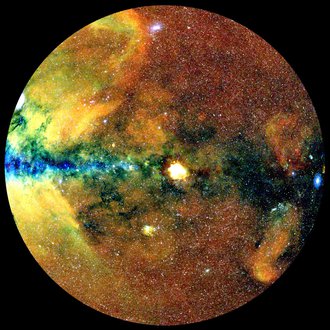
The X-ray sky, projected onto a circle (so-called zenith equal area projection) with the center of the Milky Way on the left and the galactic plane in the horizontal. The photons are color-coded according to their energy (red for energies of 0.3-0.6 keV, green for 0.6-1 keV, blue for 1-2.3 keV).
Credit: MPE, J. Sanders for the eROSITA consortiumThe next talk of the Virtual Babelsberg Starry Nights of the Leibniz Institute for Astrophysics Potsdam (AIP) presents the first data publication of the X-ray telescope "eROSITA" and will be broadcasted on the YouTube channel “Urknall, Weltall und das Leben” (Big Bang, Universe and Life) from Thursday, 18th April 2024.
On Thursday at 8m, the lecture by Dr. Georg Lamer on "eROSTIA – Mapping the hot universe" (German) from the Babelsberg Starry Nights series will be online. The eROSITA X-ray telescope was launched into space from Baikonur in 2019 with the Spektrum-Röntgen-Gamma (SRG) satellite and mapped the entire sky several times in the X-ray range until February 2022. The German eROSITA consortium has published its share from the first 6-month sky survey and made the largest catalogue of X-ray sources worldwide with 900,000 objects available. In his lecture Georg Lamer introduces the eROSITA project and presents some highlights from the first 6 months of the sky survey.
Usually on the 3rd Thursday of each month, starting at 8 p.m., the lectures of the Virtual Babelsberg Starry Nights become available at
https://www.aip.de/babelsberger-sternennaechte
and via the YouTube channels "Urknall, Weltall und das Leben" (Big Bang, Universe and Life) or "videowissen" and can be viewed afterwards at any time.
Images
The X-ray sky, projected onto a circle (so-called zenith equal area projection) with the center of the Milky Way on the left and the galactic plane in the horizontal. The photons are color-coded according to their energy (red for energies of 0.3-0.6 keV, green for 0.6-1 keV, blue for 1-2.3 keV).
Big screen size [1000 x 1000, 290 KB]
Original size [1400 x 1400, 510 KB]
